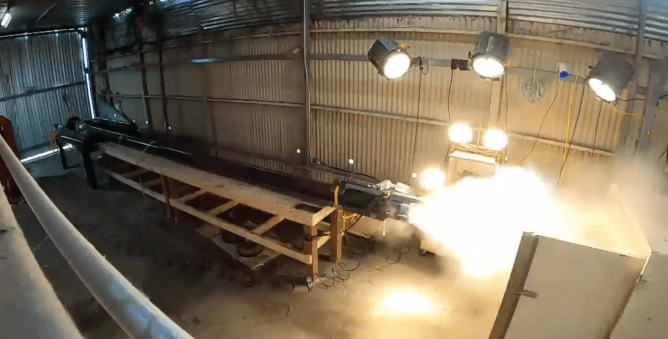The Alternative to Rockets: Longshot Space’s Kinetic Launch System
In the ever-evolving field of space exploration and technology, innovation is key. Companies like SpaceX and Blue Origin have revolutionized the way we think about reaching orbit. However, a startup called Longshot Space is taking a unique approach by developing a kinetic launch system that could potentially disrupt the traditional rocket-launching method.
According to Longshot’s CEO, Mike Grace, their system uses a giant, miles-long ‘gun’ to gradually accelerate payloads to hypersonic speeds before launching them into orbit. This concept might sound absurd at first, but bear with us as we delve deeper into the world of kinetic launch systems and explore why this approach could be more cost-effective than traditional rocket launches.
The Benefits of Kinetic Launch Systems
So, what exactly makes Longshot’s system so promising? Let’s start with the benefits:
- Low Costs: Longshot aims to achieve very low costs to orbit, potentially as low as $10 per kilogram. For comparison, a rideshare on a SpaceX Falcon 9 rocket can cost around $6,000 per kilogram.
- Rugged and Reliable: The kinetic launch system is designed for rugged environments and can withstand harsh conditions, making it an attractive option for payloads that require minimal maintenance.
- Scalability: Longshot’s system is modular, allowing for easy scaling up or down depending on the specific needs of each mission.
Longshot’s Architecture: A Closer Look
But how does this giant ‘gun’ work? The company’s architecture is based on two main principles:
- Accelerant Gas: An accelerant gas pushes a plate (and the payload) forward using multiple injections.
- Squeezing the Payload: The system also uses side-pressure to accelerate the payload, although this method will not be used for Mach 7 speeds and above.
The system’s primary goal is to keep acceleration forces low, which is beneficial for both the vehicle and payload. Longshot aims to maintain maximum gravitational forces between 500-600 times the force of gravity, which is significantly lower than other kinetic launch systems.
Why Nevada? The New Location for Longshot’s System
After building a prototype in Oakland, California, Longshot decided to relocate its operation to Tonopah, Nevada. This decision was made to accommodate the increasingly large space guns and to avoid potential safety hazards. "We’d prefer not to blow ourselves and other people up," said Mike Grace.
The new location will enable Longshot to demonstrate launch capability to prospective customers, including the U.S. Department of Defense.
A Comparison with Other Kinetic Launch Systems
For those interested in exploring further, let’s take a brief look at how Longshot’s system compares to other kinetic launch systems:
- Scalability: Longshot’s system is designed for scalability and can be easily adapted for different mission requirements.
- Cost-Effectiveness: The company aims to achieve low costs to orbit, making it an attractive option for clients looking for cost-effective solutions.
- Reliability: The kinetic launch system is built for rugged environments and can withstand harsh conditions.
Conclusion
Longshot Space’s kinetic launch system offers a promising alternative to traditional rocket launches. By using a giant ‘gun’ to accelerate payloads, the company aims to achieve low costs to orbit while maintaining ruggedness and reliability.
While this concept may seem unusual at first, it has the potential to disrupt the space industry in the future. As Longshot continues to develop its system, we can expect to see new breakthroughs in the world of space exploration and technology.
Sources
- "Longshot Space." www.longshotspace.com
- "Kinetic Launch System." Wikipedia.
- "SpaceX Falcon 9." SpaceX.
- "Blue Origin New Glenn." Blue Origin.











